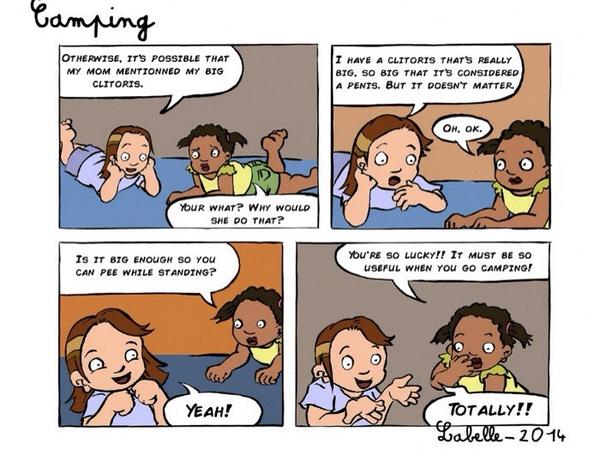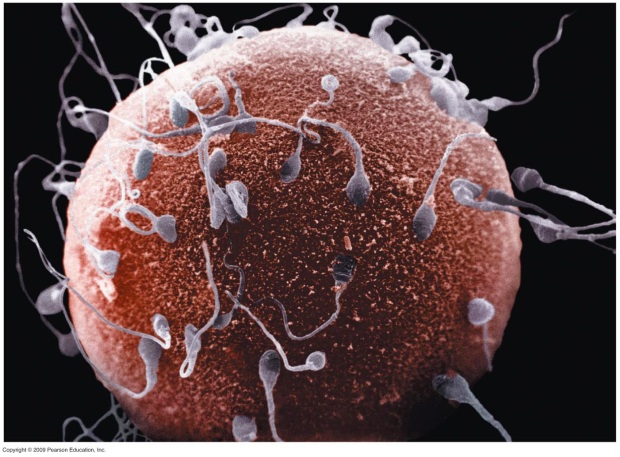1. Humans, like the vast majority of species, reproduce sexually. This means that the reproduction of our species is achieved through the fusion of a female gamete with a male gamete to produce a new organism. In normal cases, each organism produced will be unambiguously either female or male, and will produce the appropriate gametes for the purposes of sexual reproduction.
2. The categories of female and male are thus general biological categories that apply to all species that reproduce sexually. Humans are not special in this regard. While the language we use to describe these biological facts, and the values we attach to these facts, will be shaped by culture, the facts themselves exist independently of culture or our social understandings of them. Whether or not we have the language with which to describe it, females will continue to produce large, non-motile gametes (ova), and males will continue to produce small, motile gametes (spermatozoa).
3. Humans, like the majority of species and like all mammals, are sexually dimorphic. This means that female and male organisms of the same species are distinguishable from one another, due to differences in their anatomy and physiology: their primary and secondary sex characteristics. In female humans, relatively higher levels of oestrogen will lead to the development of a vulva, vagina, ovaries, uterus, breasts, and a range of other physiological markers. In male humans, relatively higher levels of testosterone will lead to the development of a penis and testes, deepening of the voice and growth of facial hair at puberty, and a range of other physiological markers. Again, humans are not special in this regard. While the language we use to describe these biological facts and the values we attach to them will vary with culture, the facts themselves exist independently of culture or our social understandings of them. Whether or not we have the language with which to describe it, at puberty female humans will begin to develop breasts and to menstruate.
4. As mentioned in point 1, in normal cases, the child that is born as a result of human reproduction is unambiguously female or male and easily recognised as such, as a result of the visible sex organs that develop in utero. In a small percentage of cases, the child is intersex. This means that the sexual characteristics the child displays are such that it is not possible to make a simple classification of female or male. While it is difficult to make a clear determination on the prevalence of intersex conditions, due to the range of different biological factors that may cause it, it is estimated that around one in 2,000 children will be born visibly intersex. The fact that some humans are intersex in no way diminishes the truth of sexual dimorphism, any more than the fact that some humans are born missing lower limbs diminishes the truth of the statement that humans are bipedal.
5. In all of those cases where the child is unambiguously female or male, the biological sex of the child is recognised at birth: female children are called girls, male children are called boys. Correctly identifying the genitals that a child possesses and therefore the biological sex to which they belong is not a matter of assigning gender to the child; it is simply to recognise the biological facts and to give them the correct biological label. Whether or not we have the language with which to describe it, female and male humans will exist. Children with vulvas will continue to be born, and children with penis and testes will continue to be born, whether or not we call them girls and boys (and whether or not we call those organs by those labels. A penis is anatomically a different organ from a clitoris, no matter what name you give it).

If you pee out of it, it’s not a clitoris at all. Calling your penis a “big clitoris” doesn’t make it female.
6. To summarise points 1-5: despite the existence of some unusual cases that deviate from the norm, the vast majority of humans possess the anatomical characteristics of either one sex or the other. These characteristics determine the reproductive function the individual can go on to perform. Biologists use the labels female and male to refer to these sex classes. Whether we retain these labels to refer to these sex classes, or whether we allow those labels to be co-opted to mean other things and thereby lose our language to describe these basic biological facts, these basic biological facts will remain. Every human being that has ever existed was created through this mechanism, and it took a lot of arduous and dangerous reproductive labour on the part of their mothers to get them here.
7. There is nothing remotely oppressive or unjust about correctly labelling a child’s biological sex on the basis of their genitals, and therefore correctly identifying their potential reproductive role. Neither is there anything essentialist or determinist about this classification. To acknowledge that on the basis of their biology, only one half of our species is potentially capable of conceiving and gestating live young, neither reduces female persons to that reproductive function, nor prescribes it as necessary for them. However, to deny this basic biological fact renders female biology unspeakable, which in turn makes it impossible to describe and analyse the oppression that accompanies living in a female body (such as rape and sexual violence, lack of access to contraception and abortion, provision of maternity healthcare and maternity employment rights, lack of investment and research into female illnesses and diseases…)
8. Women’s oppression has its historical roots and its ostensible justification in female biology and the exploitation of female reproductive labour. Altering the definition of the word ‘female’ so that it now means ‘any person who believes themselves to be female’ is not only conceptually incoherent (more on this later); it also removes the possibility of analysing the structural oppression of female persons as a class, by eradicating the terminology we use to describe the material conditions of their existence. (Bookmark that link for later if you must, but do read it. Read it more than once, ideally. It’s worth it.)
9. Furthermore, for those who feel strongly that they should have been born female but were not, changing the definition of the word female so that it also applies to them will bring only a temporary alleviation of their suffering. It is not the existence of the words ‘female’ and ‘male’ that persons with dysphoria find distressing. It is the underlying biological facts to which they refer, as well as the socially constructed gender roles that are associated with being a member of that sex class, that they find intolerable. Neither of these sources of pain will be remedied by changing the label we use to refer to them. The words female and male are neutral descriptors, and there is nothing pejorative about being classified as male. Any negative connotations the words female and male bring to mind are caused by the social construction of gender norms associated with the sexes, in the form of femininity and masculinity – this is the subject of the next page.
Next – Gender
